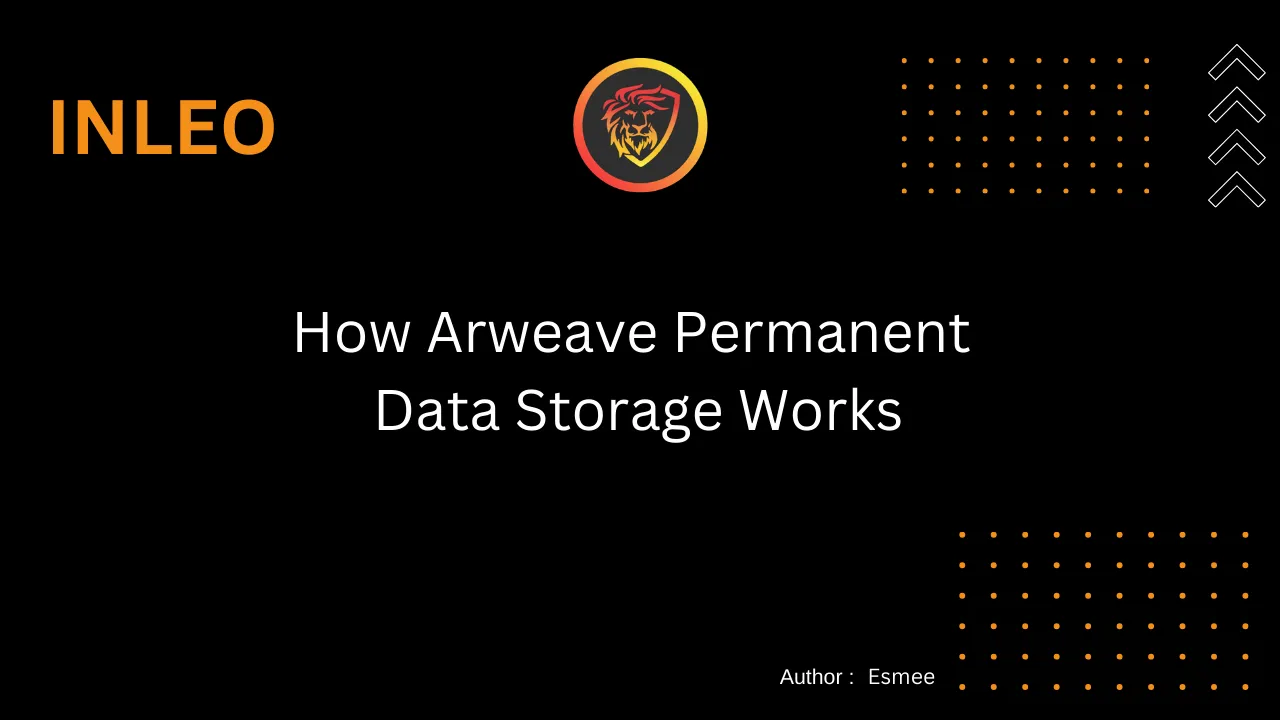Imagine a scenario where you have a document that you want the future generations to have. You digitize it and send it to thee email account or store it in the hard drive. This way you save it as long as you have control or someone else has the access to that document. So it can be assured for few years but what if you want to do this forever?
In this case having a web storage on the internet that does the permanent storage would be a good direction. In past people have made the storage on the archive websites like arxiv and wayback machine for storing the websites and the tweets. But when you have documents in the format say like audio, image and video files then you have to think of other solutions.
This is where the Arweave blockchain comes intothe play. This blockchian stores the data in a permanent way and the miners have the access to them on demand.
Let's talk about how the perma data storage works.

Permanent Storage on the Arweave Protocol
Let's assume that you have a file. You create an account with the arweave dApps and then make sure to have a one time fee for whatever data that you wish to upload. Like that data is going to stay on the blockchian network and the miners would be able to access them. So in order to compensate the miners there is a one time fee which you have to pay on the blockchain.
So how come the permanent storage works? Whatever the fee is moved on the arweave network is making sure that the blockchain is compensated for any new hard drive and the storage volumes. And so this would sustain for few generations as long as the network is sustainable through fees and the adoption of storage services in this blockchain.
You can check out the Arweave's whitepaper for more information on how the protocol works in more technical depth.
Proof of Access on Arweave Blockweave
Arweave blockchain has the three blocks on the chain - "previous, present and recall". This approach of the blockchain is in the blockweave that allows the miners to mine the respective blocks as the chain demands. And this approach is called as the "Proof of Access". One time fee is pooled in this and the miners get compensated for accessing the data in the blockchain.
There is no download cost for the data on the chain. Like say you have 0.01 cent for the upload cost which can be low based on how much high data we have. If you have higher cost data the fee would be there and it would reflect. The miners earn either way for uploading the same on the chain and also the overall in and out of the storage overall cost is something that miners would require to manage which is not easy. However all of this is managed out of the pool income for sustainable future.
Cloud Data on the Blockchain?
Outside the world of blockchain, most of our data is on the cloud servers like GCP, AWS and the Azure. However on the blockchain the miners have to manage their own servers and they can be anywhere in the cloud. And they are growing in terms of the data. So the cloud data is now slowly going to be integrated with the blockchain data. Which kind of make the differentiation difficult in near future.
Permanent data storage is not cheap. Yet it all works out based on the pooled funding made out of the server miners fees that is assigned at the dApps level by the arweave miners. And this is a good direction for keeping the servers sustainable with the cost that is ever increasing on the arweave network with new data that is being uploaded.
Arweave as a perma storage blockchain can serve variety of use cases. And this perma storage is sooner or later going to be useful as it contains good datasets over a period of time and then they find their usecase in everyday life.